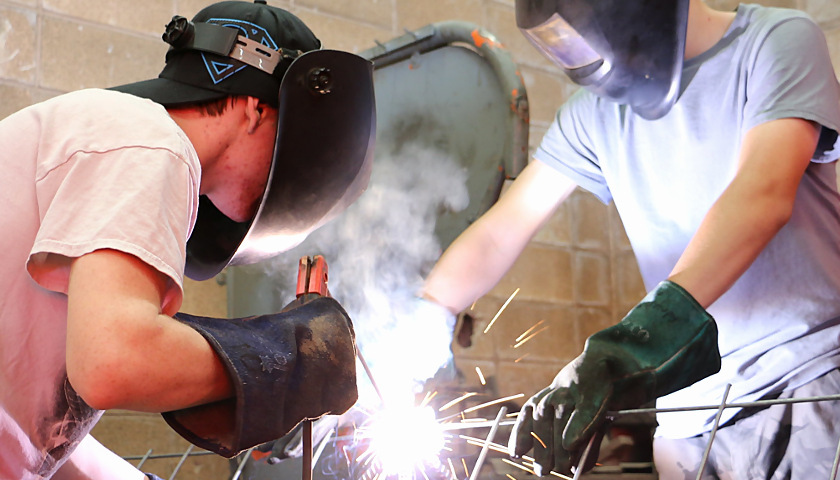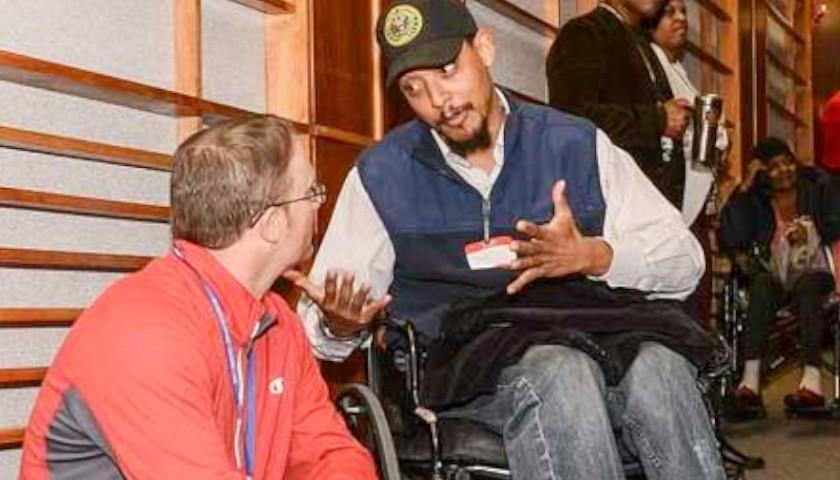MINNEAPOLIS, Minnesota – Educators throughout the Midwest are pushing for a return to an education system that teaches students “basic life skills” and prepares them for a lucrative career in the trades.
Definitions
Several terms are used to describe this education theory, such as Career and Technical Education (CTE), shop classes, and industrial arts courses. All of these terms are frequently used interchangeably to describe secondary and post-secondary courses that prepare students for the workforce.
But they have some important distinctions, too. CTE, for instance, is a catch-all term that can include shop courses, but not necessarily. In fact, Minnesota and Wisconsin are the only two states where statewide CTE curricula have shop classes built into them. Shop class, a term slowly being replaced by the more modern “industrial arts,” is essentially nonexistent in the 48 other states.

The traditional shop class, however, isn’t exactly thriving in the Midwest. While each program may differ from school to school, shop class can generally include instruction in basic carpentry and woodworking, some metalworking, using power tools such as band-saws and lathes, and in some cases, basic auto-mechanics.
CTE can (but often doesn’t) include shop classes.
“Many schools have eliminated industrial tech classes based on the expense and other curriculum requirements. Students benefit from hands-on learning and practical application of core curriculum,” Jean Rakun (pictured below), president of the Minnesota Association for Career and Technical Education, explained in a recent interview with The Minnesota Sun.
“The lack of courses in CTE has created a lack of students with a passion for industrial tech careers and caused a shortage of prepared workers in fields related to industrial tech classes,” she added.
While some have declared that “shop class is dead” or observed that public education isn’t preparing students for the workforce, the issue is starting to receive some national attention.
In July 2018, President Donald Trump signed the “Strengthening Career and Technical Education for the 21st Century Act” into law. The bill reauthorized the 2006 Carl D. Perkins Career and Technical Education Act, which provides an “increased focus on the academic achievement” of CTE students, according to the Minnesota Department of Education.
Some of the Democratic presidential candidates have discussed CTE in their education proposals, such as Rep. Tim Ryan (D-OH-13). Sen. Amy Klobuchar’s (D-MN) Career and Technical Education Research and Outreach Act was incorporated into the bill signed by President Trump in 2018.
“As the American workforce changes, students deserve the opportunity to find the career path that works best for them. Whether that includes a four-year degree, skills training, career-related learning, or professional development, students need to know what options are available to them,” Klobuchar said of her bill.
Upper Midwest Leads the Way
Klobuchar’s home state of Minnesota and the neighboring state of Wisconsin both have several organizations and schools that are leading the way in developing CTE programs. Minnesota has the Association for Career and Technical Education, while the American Technical Education Association is headquartered in Minneapolis.

Rakun, a CTE coordinator with nearly 40 years of experience in the field, said that “all students should have exposure to a CTE class to ensure the student is receiving a well-rounded education, which offers one or more courses in a career field.”
“An industrial tech class or another CTE careers class will help a student determine goals for college and beyond. Many CTE classes offer lifetime skills which may lead to a career choice,” she told The Minnesota Sun. “Also, there are many opportunities for a great career that doesn’t require a four-year degree. In addition, CTE classes offer relevant applications of core curriculum. For example, geometry is a key skill used in all the woodshop classes. Research shows that students learn differently. Hands-on courses provide for a different learning experience and an opportunity to experience a career field.”
Others educators who spoke with The Minnesota Sun agreed with Rakun’s assessment. Kathryn Feuerhelm of the University of Wisconsin, Stout’s Emerging Center for Career and Technical Education Excellence said that “participation in hands-on, workforce learning is an important component in preparing learners for college and career readiness.”
Stout’s program and a similar one at St. Cloud State University in Minnesota focus on preparing educators of CTE courses.
Feuerhelm noted when speaking with The Minnesota Sun that the program “encompasses much more than the traditional ‘shop’ class” by offering teacher licenses in family and consumer sciences education, marketing and business education, technology education, and the like.
Kurt Helgeson, chair of Department of Environmental and Technological Studies at St. Cloud State University, told The Minnesota Sun that his program is the only one in the state preparing CTE educators.
“There is a lack of courses since it is not normally required in schools. There is also a shortage of teachers for the programs. We are the only program preparing the teachers in Minnesota and we only graduate four to eight a year,” he said. “There are 25-35 openings each year. We are doing other things to support schools to recruit teachers to fill the positions.”
According to the Minnesota Department of Education, there are approximately 12.5 million high school and college students enrolled in CTE nationwide, but the state is only producing up to eight new educators for these programs each year.
Success of CTE
 After speaking with educators throughout the region, it’s clear that the issue can be summed up this way: CTE and related courses prepare students for high-demand and high-wage jobs while improving their overall performance in school, but CTE programs lack the resources and support they need to truly succeed.
After speaking with educators throughout the region, it’s clear that the issue can be summed up this way: CTE and related courses prepare students for high-demand and high-wage jobs while improving their overall performance in school, but CTE programs lack the resources and support they need to truly succeed.
The Minnesota Department of Education reports that students with a concentration in CTE are nearly 15 percentage points more likely to graduate high school compared to the national average. Another study found that students taking college prep courses with “rigorous CTE” were more likely to meet the standards for college and career readiness.
“When CTE classes are cut from the curriculum offerings, students are not exposed to all the career possibilities and lifelong skills. Every student should have an opportunity to explore the different career fields in their own school district,” Rakun said. “In my opinion, school districts should require one credit in CTE classes and one credit in a career exploration class. This would mean every student would be exposed to a variety of career fields and would provide career guidance. Research shows that many students go off to college and haven’t decided on a career pathway. Many students change their major in college and end up going five or more years before entering the work world. Students need to understand which careers require four-year, two-year or technical college education.”
Stigma
So why aren’t more students participating in CTE courses?
According to Kent Misegades, the author of a forthcoming book on the industrial arts published by Star News Digital Media, the answer likely has something to do with stigma.
“For decades, schools prepared people for adulthood,” he said, but noted that now there are “negative connotations about any course of study that doesn’t lead you to a four-year degree.”
“There’s still a notion that if you want to take CTE classes, industrial arts classes you’re not smart enough to get into the other classes,” he added, saying these courses have been turned into “classes for dummies.”
As a result, Misegades said, our culture is now facing the “consequences of not teaching people some basic life skills.”
– – –
Anthony Gockowski is managing editor of Battleground State News, The Ohio Star, and The Minnesota Sun. Follow Anthony on Twitter. Email tips to [email protected].





